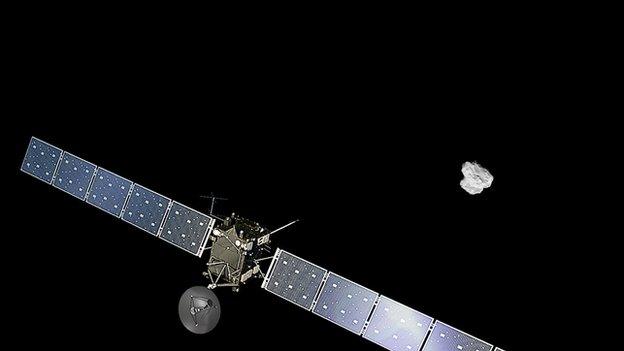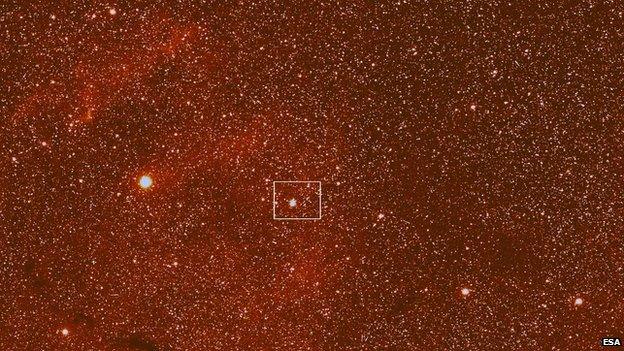Rosetta 'on its final approach'
- Published

An artists impression of Rosetta approaching the comet
After a journey that has lasted a decade, Europe's Rosetta spacecraft is now on its final approach to a comet.
One of the scientists leading this European Space Agency (Esa) venture described it as "the sexiest, most fantastic mission ever".
Throughout human history, comets lighting up the night sky have triggered fascination and fear but their speed and distance have made them difficult to investigate.
One theory is that they delivered water, carbon and other essential building-blocks for life to the early Earth.
'Pre-programmed'
Previous missions have had to be fly-bys - brief encounters crossing a comet's path to gather data or collect samples of dust.
By contrast, Rosetta is designed to fly around comet 67P/Churyumov-Gerasimenko in a form of orbit for more than a year, its 20 instruments providing unprecedented information about the comet's structure and composition.
Wednesday's landmark manoeuvre should bring Rosetta into a controlled flight in a triangular pattern around the comet.
With 67P hurtling along at 55,000 km per hour (34,000 mph), the spacecraft's speed has been adjusted so that in relative terms it will be flying beside the comet at a slow walking pace of 1m/sec (2.2mph, 3.6kph).
This has never been tried before - and because radio signals take more than 22 minutes to travel between Earth and the spacecraft, the main moves have to be pre-programmed.
Project scientist, Dr Matt Taylor, said: "For me this is the sexiest, most fantastic mission there's ever been. It's ticking a number of boxes in terms of fascination, exploration, technology and science - predominantly science."
Ingredients for life

Rosetta's first sight of its target earlier in 2014
Planned back in the 1990s, hundreds of scientists and engineers have been on tenterhooks for this moment.
They watched the launch back in March 2004 and then waited as Rosetta was sent on a long trek through space to allow it to pick up speed, orbiting the Sun five times and using the gravity of Earth and Mars to accelerate to catch up with 67P.
During one phase as the spacecraft was on the most distant and coldest stretch of its journey, it was put into hibernation for more than two years to save power - and its reawakening last January was a cause for relief and celebration.
The plan is to measure the ratio of hydrogen and deuterium in the comet's ice to provide a comparison with water on Earth.
Researchers also want to see if the comet contains amino acids, molecules that are essential ingredients for life.
A Nasa mission called Stardust, which gathered samples of dust from a comet, found evidence of the amino acid glycine.